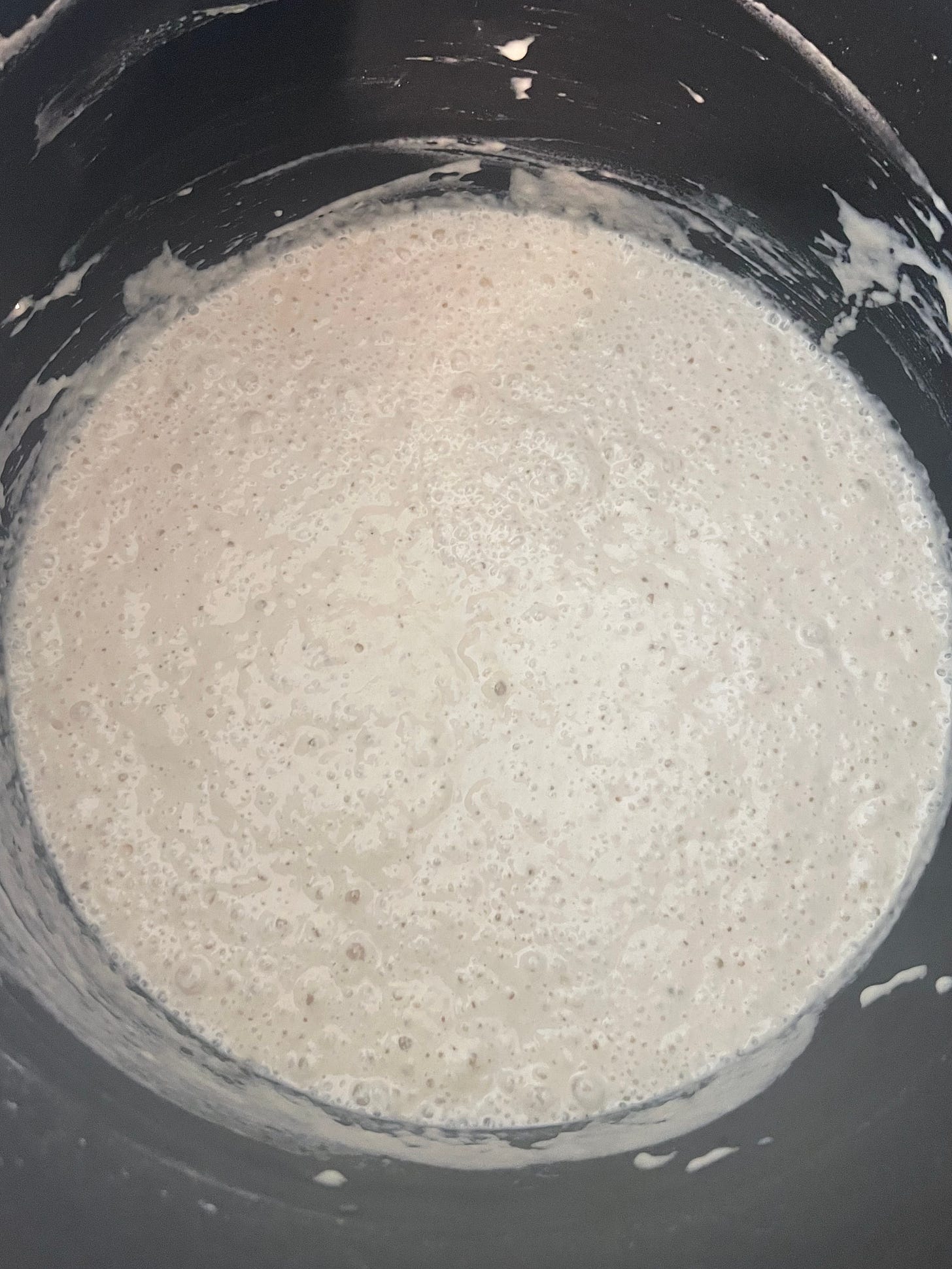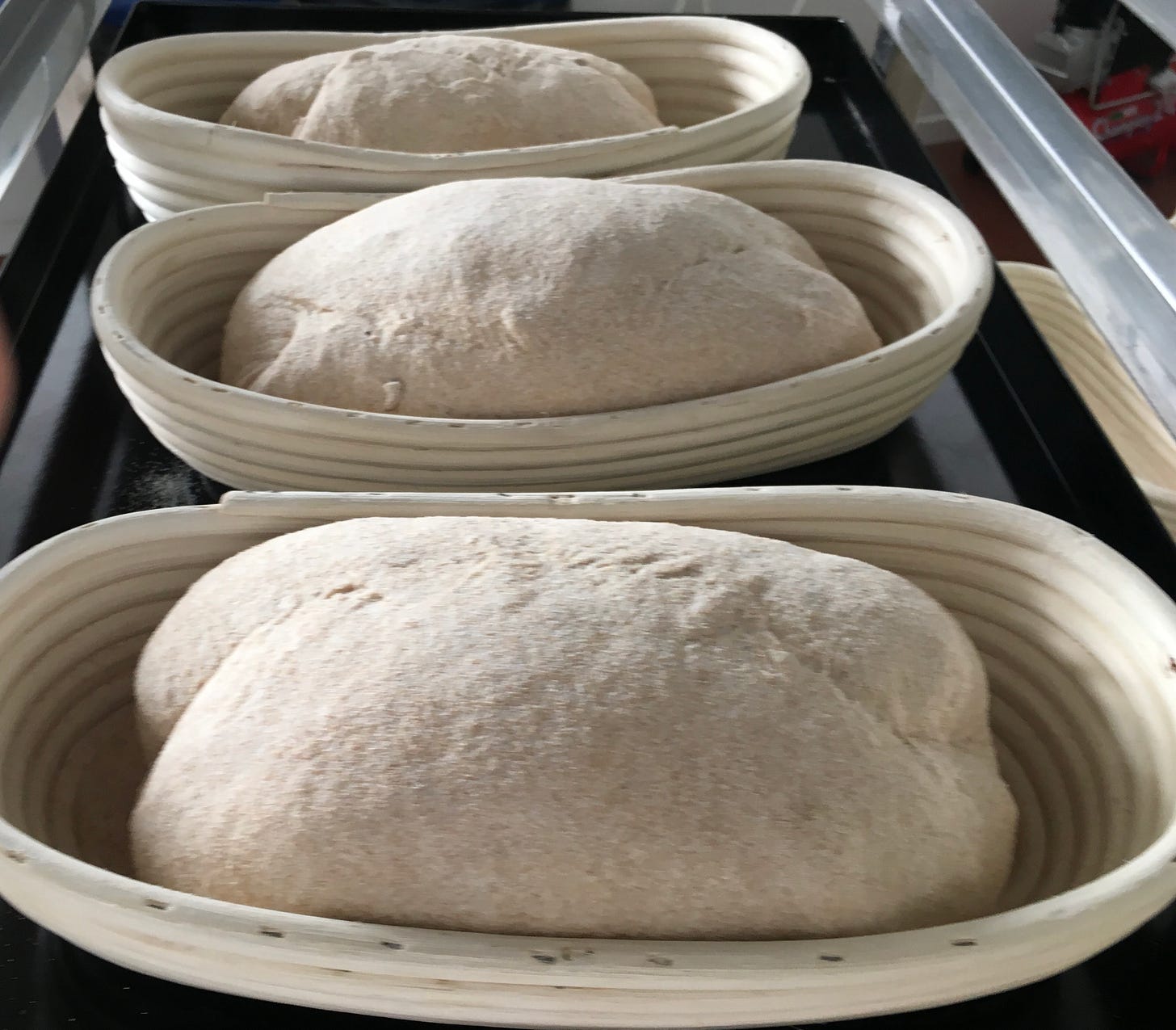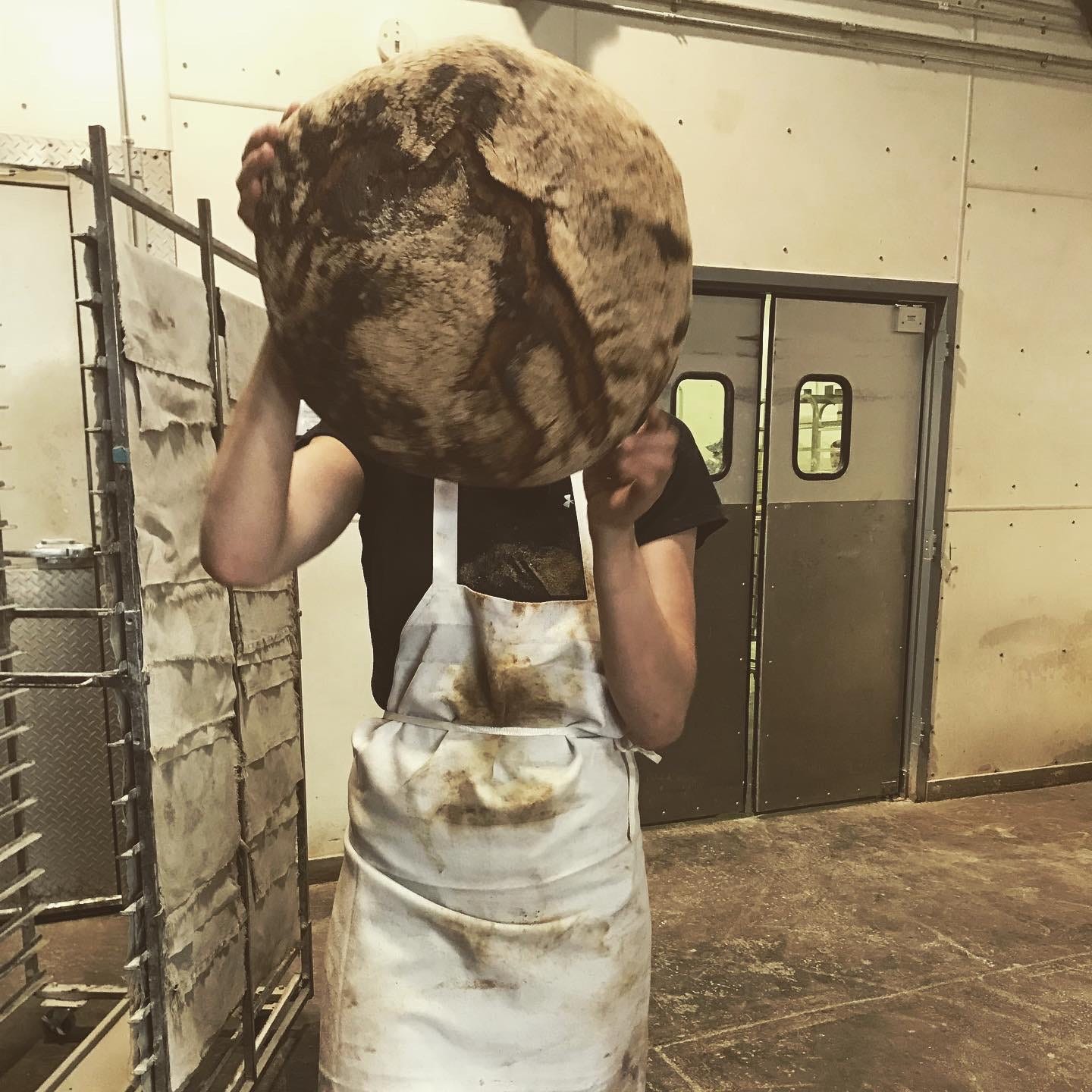This week, one of Food People’s editors, Christina, makes her way through the doughs and dough-nots of life. We dive back into bread, as she has done for us a few times in her articles about the Comunità Grano Alto (Part 1 or Part 2) and Bread Tastings, but this time, she approaches the loaf from a new perspective.
So don’t loaf around; let’s get this bread!
Bread isn’t just a staple food—it’s a staple of my life. As a former baker turned grain enthusiast, I can’t help but see bread as more than just sustenance. It’s a metaphorical mirror, offering lessons on patience, growth, and resilience.
Years ago, while working as a baker, I developed an allergy to dry flour. The allergy (combined with internal pressure to achieve the perfect loaf) eventually led me to return to school. There, I found myself talking quite a bit about the systems behind the loaf, and bread found its way back into my life—not just as food but as a source of personal reflection, a metaphor for life.
There are bread puns and metaphors everywhere (or at yeast they are everywhere in my life), and I found them helpful for careful reflection. The opportunity to create and observe something tangible and living was a precious gift. I found myself watching the stages of bread-making from a new perspective. Watching dough transform reminded me of my journey. It wasn’t just bread rising; it was me, learning to rest, let go, and grow. Over time, bread became my metaphor for everything: relationships, grief, decision-making, and finding peace in life’s messiness.
And so, in the spirit of sharing and kneading these ideas together, I offer you this reflection as we approach the new year. If you’re looking for a recipe or instruction manual, you’re in the wrong place!
Wash your hands, roll up your sleeves, and let’s begin.
Starter
Like any new idea or experience, a sourdough starter thrives on care and community. It begins messy and uncertain but develops strength with consistent attention. My “starter” came from a friend who encouraged me to notice how often I compared life to bread. An observation that sparked many conversations about it as a framework for navigating life.
At first, it was just that: an idea. A messy beginning that needed tending. Like feeding a starter, I kept returning to it, adding to it, mixing it, and waiting for it to develop. The process wasn’t instantaneous. It required attention and care, but over time, the idea began to bubble and grow into something foundational.
That’s how I’ve found my way into the food world and change-making projects. From baking bread to supporting networks and communities (much like nurturing the community of bacteria and yeast in my starter), I’ve learned that these endeavors thrive on connection, care, and the belief that small, consistent efforts can grow into something transformative.
Mixing
Once the starter is ready (i.e., bubbly and full of life), the next step is to combine your ingredients. Mixing is when you commit to the process; even if the initial results feel chaotic, you eventually find your way to something cohesive.
These flours are rich in nutrients. The bran and germ are still intact, adding complexity and flavor to your dough (remember, I’m not talking about your refined white flour here)— just like one’s emotions, desires, and fears.
We begin with the autolyze. For those unfamiliar, this is a magical pause in bread-making where the flour and water, after being incorporated, need to sit undisturbed. During this time, the gluten and starch begin to align themselves naturally. The dough becomes smoother and stronger, seemingly on its own.
At first, it’s a shaggy mess. When you pull at it, it tears apart, showing no strength or extensibility. Everything seems overwhelming or unwieldy. Times of grief, stress, or uncertainty often feel like this: fragmented and unmanageable. But then, you rest. You step back and let the autolyze do its thing.
After some time, we mix again to build more strength. The mixing stage isn’t just about combining ingredients; it’s about creating the foundation for something greater. And while it might feel messy at first, the rest that follows transforms chaos into opportunity. Mixing and then resting, then mixing again, then resting again—whatever it is, the dough taught me that building strength takes time.
This is when we move onto bulk fermentation, a mass of dough left to hang out again. Gosh, you might be thinking, quite a lot of rest is involved here. But that’s the key. To life as well, isn’t it?
Bulk Fermentation, Shaping, & Proofing
After the mixing, we move into the bulk fermentation stage, which calls for patience, trust, and a little faith in the unknown. The dough sits quietly, expanding as natural yeasts and bacteria do their thing. It’s alive and evolving, but you can’t see every detail of what’s happening inside.
In life, just as in bread-making, you can only control so much. You’ve done the work—mixed the dough, nurtured the starter, and created the right environment. But now, you have to let go and let the process unfold.
Remember that this stage is not passive: regular check-ins with the dough through “folds” or gentle stretches that realign the gluten, redistribute temperature, and encourage even development. These are moments of care and adjustment, a chance to reconnect with oneself.
Fermentation isn’t always predictable. Maybe the temperature shifts and the dough ferments faster than expected. Life, like dough, has many variables. We control what we can, but we must also be flexible and adapt when the unexpected happens. Just as bread needs rest to develop its full potential, I’ve learned the importance of giving myself time to heal.
After bulk fermentation, we shape the dough, a key step in defining its future form. Whether through a pre-shape or final shaping, this is a moment to create structure, a foundation for what’s to come. It’s a leap forward, setting the stage for success with intention and care.
Finally, the dough enters the proofing stage. Like bulk fermentation, this stage requires patience and active rest. While the dough rests, the internal work continues, reminding us that rest is not idle but essential. I often revisit this lesson: even when so much is happening beneath the surface, prioritizing rest is critical for growth.
Score & Bake
The moment of scoring the dough—a quick, decisive cut—is symbolic to me. You create a controlled release, allowing the bread to expand where you want it to rather than it splitting unpredictably. In life, too, we need to create outlets for release—whether through meditation, honest conversations, or creative expression. It’s a way of choosing where and how to let go so the pressure doesn’t build up elsewhere.
And now, to the final stage: the bake. It’s time to take that leap, knowing that the lump of gluten strands will transform into something new, something whole. Maybe you have many thoughts running through your head: Is it proofed correctly? Did I use too much flour when I shaped it? Did I score it correctly? It reminds you to trust yourself and move forward, even if you don’t feel ready.
The oven is where the dough finally reaches its potential. It rises, darkens, and develops a crust, an irreversible process like many life decisions. But there’s beauty and power in this commitment. Once the loaf is in the oven, you let go of control and allow the transformation to happen.
I remember when I worked as a bread baker, obsessing over perfect loaves. Every detail—hydration levels, scoring patterns, bake times—felt like a measure of my success. But striving for perfection left me exhausted. Over time, I have learned to embrace imperfections. A loaf with uneven scoring or a slightly flatter shape wasn’t a failure; it was part of the process and of the story.
The goal isn’t perfection when baking a loaf of bread. Each one reflects its journey—of the choices you made, the challenges you faced, and the care you gave. And even if the loaf isn’t ideal, it’s still nourishing.
For me, the bake represents courage. It’s the willingness to take what I’ve built, imperfections and all, and move forward. And if things don’t turn out as planned? You still have a warm loaf waiting for you, and I bet it is pretty darn fabulous… if not, just douse it in some excellent olive oil and sea salt.
The Loaf
A finished loaf reflects its journey, carrying the marks of rest, patience, and transformation. This process teaches us to slow down, trust the timing, and embrace the unknown.
Metaphors, like bread, help us connect—with ourselves, others, and life’s uncertainties. Every mix, fold, rest, and bake shapes something worthwhile. And just as a starter leads to countless loaves, there’s always a new beginning waiting.
Whether or not you’re baking, remember: rest, trust the process, and savor the journey—it’s delicious.










A perfect parallel between life and loaf. Brilliant!
Well, I'm a key listener for this kind of thing but still! You blew me away. Thank you.